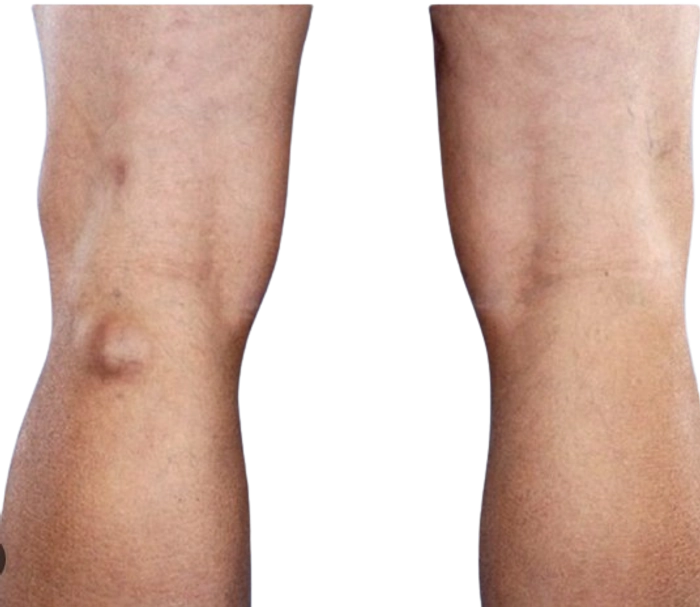Introduction
A popliteal cyst, also known as a Baker's cyst, is a fluid-filled swelling that develops behind the knee. This condition can cause discomfort and restrict movement, affecting your ability to perform daily activities. At Dhyan Healthcare, we are dedicated to providing expert care and effective treatment options for individuals dealing with popliteal cysts, ensuring you receive the support needed for a full recovery.
What is a Popliteal Cyst?
A popliteal cyst forms when excess synovial fluid, which lubricates the knee joint, is pushed into a small sac behind the knee. This leads to the development of a swollen, fluid-filled lump. Popliteal cysts are often associated with other knee problems, such as arthritis or meniscus tears, and are commonly seen in both adults and children.
Causes and Risk Factors
Several factors can contribute to the development of a popliteal cyst, including:
- Knee Arthritis: Conditions like osteoarthritis or rheumatoid arthritis can lead to increased fluid production in the knee joint.
- Meniscus Tears: Injuries to the knee cartilage can cause fluid to accumulate and form a cyst.
- Inflammatory Conditions: Other inflammatory conditions, such as gout or lupus, can also increase the risk.
- Knee Injuries: Trauma or injury to the knee joint can lead to the formation of a cyst.
Symptoms
The symptoms of a popliteal cyst can vary, but commonly include:
- Swelling: A noticeable lump or swelling behind the knee.
- Pain: Discomfort or pain in the back of the knee, especially when fully extending or bending the knee.
- Stiffness: Limited range of motion in the knee.
- Pressure Sensation: A feeling of tightness or pressure behind the knee.
- Catching or Locking: The knee may feel as if it catches or locks when moving.
Diagnosis
Diagnosing a popliteal cyst involves:
- Medical History and Physical Examination: Your healthcare provider will review your symptoms and medical history, and perform a physical examination to assess the swelling and mobility of the knee.
- Imaging Studies: Ultrasound or MRI may be ordered to confirm the presence of a cyst and to evaluate the underlying knee condition.
Treatment Options
The goal of treatment for a popliteal cyst is to reduce symptoms and address the underlying cause. Treatment options include:
-
Conservative Management:
- Rest: Avoid activities that exacerbate the symptoms and allow the knee to rest.
- Ice Application: Applying ice packs to the affected area can help reduce pain and swelling.
- Compression: Using a compression bandage or knee brace to support the knee and reduce swelling.
- Elevation: Keeping the leg elevated to reduce swelling.
-
Medications:
- Pain Relievers: Over-the-counter pain relievers such as acetaminophen or nonsteroidal anti-inflammatory drugs (NSAIDs) can help manage pain and inflammation.
- Corticosteroid Injections: Injections into the knee joint to reduce inflammation and alleviate symptoms.
-
Physical Therapy:
- Exercises: Specific exercises to improve knee flexibility and strengthen the muscles around the knee.
- Manual Therapy: Techniques to reduce pain and improve knee function.
-
Aspiration and Drainage:
- Aspiration: Draining the excess fluid from the cyst using a needle to reduce swelling and discomfort.
- Surgical Intervention: In rare cases, surgery may be necessary to remove the cyst, especially if it is recurrent or causing significant symptoms.
Post-treatment Care and Prevention
Effective post-treatment care and prevention strategies for popliteal cysts include:
- Gradual Return to Activities: Slowly resume activities to avoid overloading the knee joint.
- Regular Exercise: Engage in regular, low-impact exercises to maintain knee health and flexibility.
- Weight Management: Maintaining a healthy weight to reduce stress on the knee joints.
- Protective Gear: Use knee supports or braces during activities that put pressure on the knees.
Prescription for Managing Popliteal Cysts
To effectively manage popliteal cysts and promote recovery, we recommend the following prescription:
- Rest and Ice: Apply ice to the affected area for 20 minutes several times a day and rest the knee.
- Medication Compliance: Take prescribed medications as directed to manage pain and inflammation.
- Physical Therapy: Engage in a tailored exercise program to improve knee flexibility and strength.
- Compression and Elevation: Use a compression bandage and keep the leg elevated to reduce swelling.
- Follow-up Appointments: Regularly visit your healthcare provider to monitor progress and adjust treatment as needed.
Conclusion
Popliteal cysts can significantly impact your quality of life, but with the right approach to management and treatment, most individuals can experience relief from symptoms and return to their normal activities. At Dhyan Healthcare, we are dedicated to providing comprehensive care and support for individuals dealing with popliteal cysts, ensuring effective management and improved well-being.
For more information or to schedule a consultation, please visit our website or contact our clinic. Our team of experienced healthcare professionals is here to help you effectively manage popliteal cysts and enhance your quality of life.


